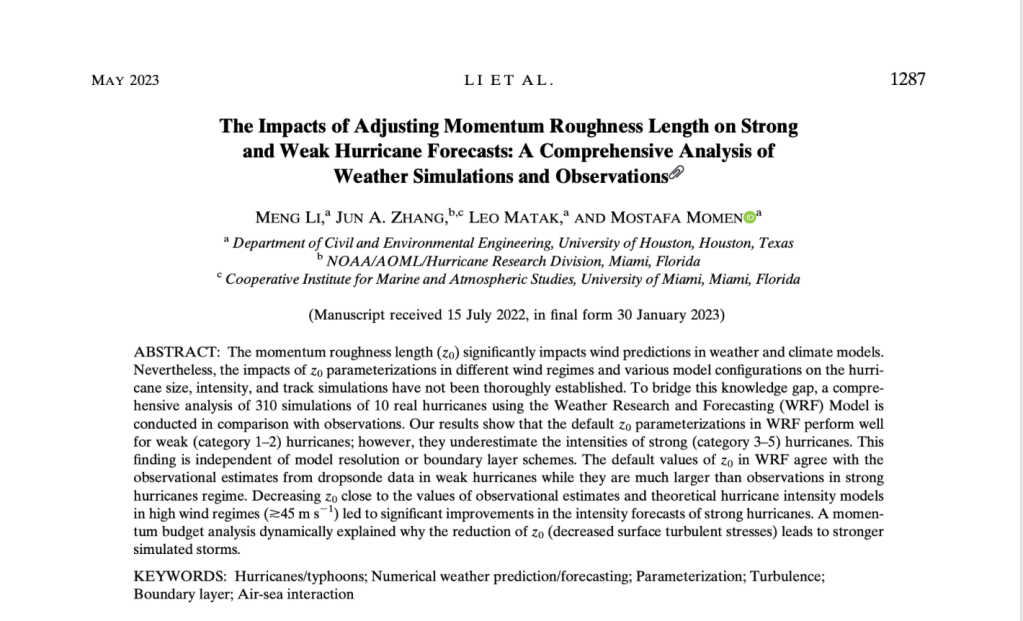This study looks at the accuracy of estimates of how rough the ocean surface is below tropical cyclones (TC) compared to observations, and at the impact of changing the roughness on TC computer forecasts. A mismatch between observations of the roughness and what the model showed was found, and correcting this improved forecasts of the strongest TCs. Hence, we suggest decreasing the default roughness length (z0) values in the Weather Research & Forecasting (WRF) model for strong hurricanes to improve their intensity predictions.

Photo taken on P3 at ~200 ft altitude in Hurricane Isabel (2003) showing the roughness of the ocean surface. As the surface gets rougher, the friction increases and the wind speed near the surface decreases. Understanding how this works is the focus of this study.
Accurate TC forecasts can limit impacts of these extreme events on infrastructure and the public. A key parameter in computer models that forecast TCs is the momentum roughness length, a measure of how rough the underlying surface is. Determining this parameter in strong-wind conditions (when the wind speed is greater than 45 m/s or about 100 mph) has been challenging due to difficulty in observing near the ocean surface and in making laboratory studies.This study looked at 310 forecasts of 10 real hurricanes using the WRF model, and the results are compared to observations. The results are analyzed to explain why changes to the momentum roughness length changes the size and intensity of TCs in the model.

Comparison of wind speed profiles with height between observed (dots; averages at each height are shown by the dotted lines) and forecasted (lines) data at high wind speeds of about 40 m/s (90 mph) and 60 m/s (135 mph) The solid lines show the wind speed obtained using the the WRF model. The results are fairly close at 40 m/s, but are large at 60 m/s, leading to changes in the model roughness.
Conclusions:
- Decreasing the roughness of the Earth’s surface in the models results in stronger and larger TCs.
- Decreasing the roughness of the Earth’s surface improved model forecasts for the major hurricanes, but not for weaker ones. There is a mismatch at high wind speeds between what the model forecasts and the observations (see Figure above) that explains the poor model performance for major hurricanes.

For more information, contact aoml.communications@noaa.gov. Jun A. Zhang was supported by
Office of Naval Research grant N00014-20-1-2071 and NOAA grant NA21OAR4590370. The study can be found at https://doi.org/10.1175/MWR-D-22-0191.1.